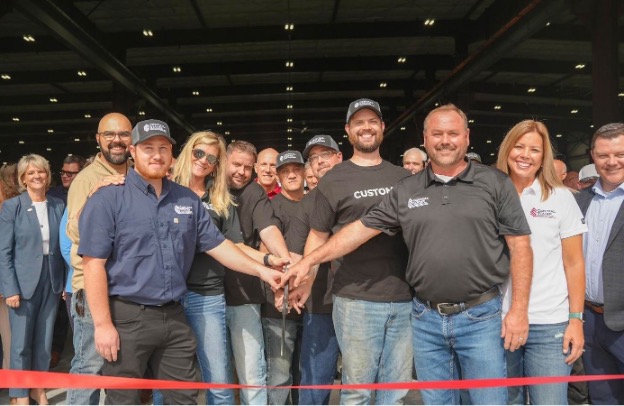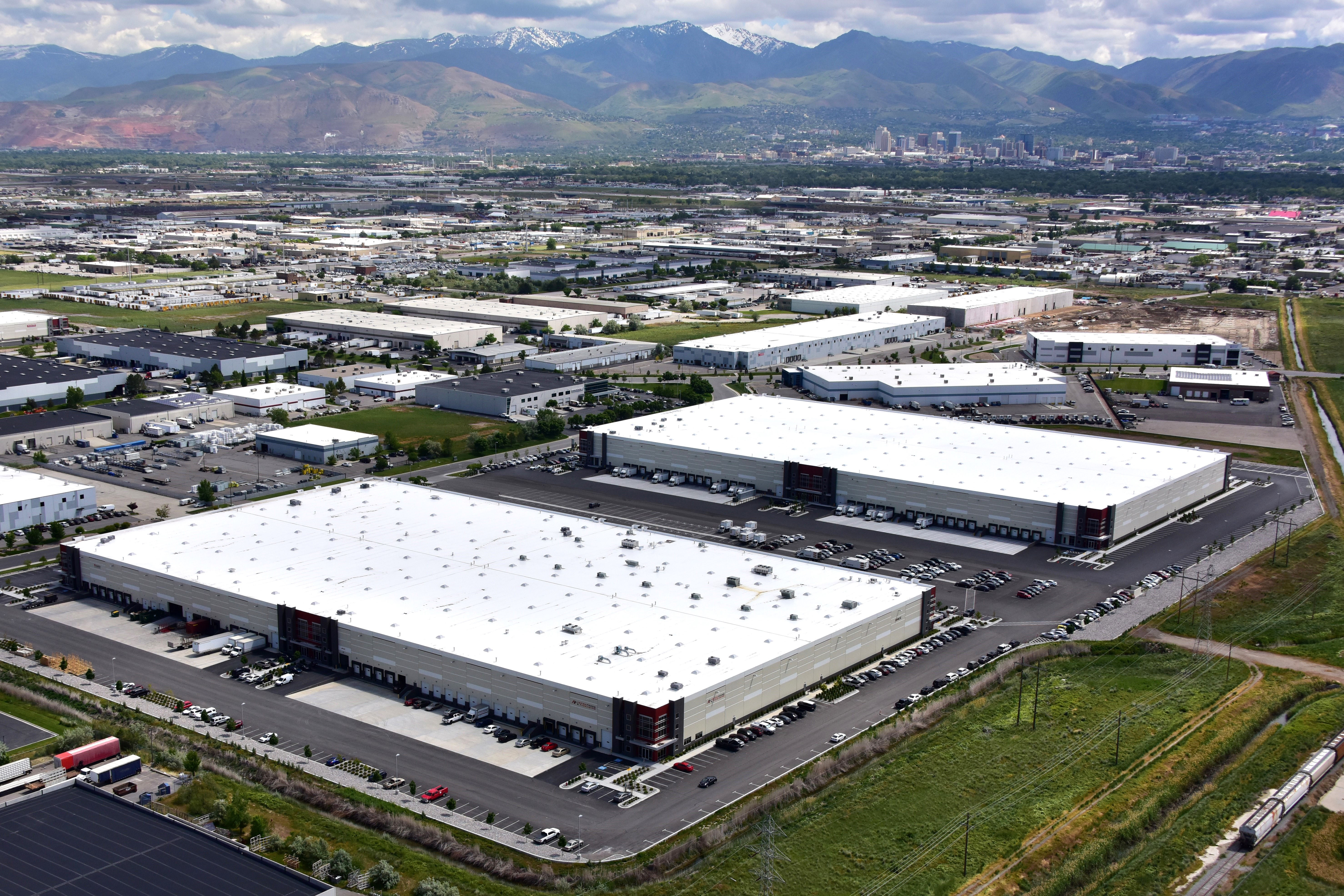Building Together: Bringing It Home in Brigham City

October 29, 2025
Brigham City Economic Development Director Paul Larsen has worn many hats during his nearly three decades of service — planner, problem-solver, and community builder. This year, he received EDCUtah’s Public Sector Leadership in Economic Development Award honoring his long-time efforts in Box Elder County. As he prepares to retire at year’s end, Larsen shares lessons from a career dedicated to helping his community thrive.
What guiding principles have shaped your work as an economic developer?
I’ve always approached the job as someone who lives here. It’s important to experience the consequences of your decisions. My first bit of advice is to live in the community you serve.
Second, see every project through residents’ eyes. Development always has impacts, and your responsibility is to minimize those where you can. If you can defend your work to the average resident, you’ll sleep well at night.
The award presentation highlighted your deep community understanding. How did you gain that?
When I came here nearly 30 years ago, I didn’t know much about Brigham City. Growing up in Montpelier, Idaho, my only connection was driving over for peaches and pears during harvest season. My mother canned fruit. We would drive over here every year during harvest time, fill the car with peaches and pears, and drive home. Then she would spend two weeks bottling fruit.
Before my job interview, I arrived early and was struck by how much I liked the place — the Main Street, the parks, the mountains. It felt like home. Over the years, I’ve learned its history and what makes it special – from the co-op, the Academy building, and the bird refuge to the Fruitway, Spiral Jetty and Golden Spike National Historic Park. That deep appreciation helps me understand what matters to residents.
What advice would you give to someone entering economic development?
Have a broad background. My career has spanned natural resources, planning, land use, and economic development, and that mix has been invaluable. You don’t need to know everything, but you should know who to call when you don’t.
Get involved with EDCUtah, the Utah Alliance for Economic Development, and professional groups like the Urban Land Institute or American Planning Association or Main Street America. Keep learning.
Also, recognize that everything a city does contributes to economic development — from public safety and utilities to libraries and parks. Our city budget is about $100 million, and I like to say that’s our economic development budget. Because quality services make businesses want to be here.
What are the ups and downs of this field?
Economic development is full of highs and lows. Recently, we worked for over a year on a food manufacturing project only to have it fall through. The reasons were out of the control of either the company or Brigham City, and it happened quickly. We went from having a press release, to suddenly…they’re not coming.
My advice is to focus on what you can control. Do your best on your end and accept that sometimes external factors will change the outcome.
On the bright side, persistence often pays off. Niagara Bottling is a great example — their first site fell through, but we worked with them to find a better option on Forest Street, and they’ve grown steadily since.
Nucor is another success story. They’re now on their third expansion here, but our first interaction almost went off the rails. During a site visit in 2005, after heavy rains, one of their reps called me from a flooded property asking, “What are you trying to sell me? I’m standing in 18 inches of water!” Fortunately, we worked through it, and the company has become a fantastic partner. The lesson: be flexible, understand company needs, and play to your community’s strengths.
That story brings to mind different ways to negotiate. What are your principles for negotiating with companies?
In economic development, sometimes you just think to yourself, “I want this project so badly.” And you’re tempted to sugarcoat things. But in reality, you need to tell companies the hard truths. If a company needs more water or new power infrastructure, be upfront about costs and timelines.
Good projects appreciate transparency. It's not their first rodeo, either. They know that development requires investment. When you’re honest, you can work together to solve challenges.
Why does Main Street matter in economic development?
Main Street is the heart of the community, you know? A healthy downtown reflects a healthy city. I once read about a CEO who visited a town with boarded-up storefronts and decided not to locate there. The reverse is also true.
When we were working with Procter & Gamble on its Box Elder County site, their visiting team loved eating at the Idle Isle Café on Main Street. It was a beloved café with hometown cooking. They’d step outside after lunch, look around, and say how great our downtown looked. That impression mattered.
Although Idle Isle has since closed, downtown Brigham City looks better than ever thanks to grant funding and revitalization efforts combined with the hard work of merchants and business owners. You can’t replicate that atmosphere in new developments. It shows pride, and that resonates with both residents and prospective businesses.
How has your relationship with EDCUtah shaped your work?
I couldn’t have done my job without EDCUtah. When I was talking about my career path, EDCUtah was critical in bringing me along and helping me understand economic development.
Their business development team worked with us on major projects like Procter & Gamble, Niagara, and Nucor. Their research team provides the kind of demographic and market data a city our size could never compile alone.
And the events…the quarterly breakfasts, the opportunity to network and meet people. That’s just priceless. I tell people that of all our memberships, EDCUtah is the last one I’d ever want to lose.
You mentioned that you have a broad background. What was your career path?
I grew up wanting to be an astronomer, until my first semester of physics and calculus convinced me otherwise. My other love was the outdoors, so I earned a degree in fisheries and wildlife at Utah State University. I planned to become a bear biologist, but the job market didn’t cooperate.
There were two openings on the Interagency Grizzly Study Team up in Yellowstone National Park, a five-year project. I was one of five finalists, but I didn't get picked. If I'd have got that job, I'd be a bear biologist today. Professor Barry Gilbert suggested I look into landscape architecture. I really liked what I saw, so I went back and got my master's degree. That degree landed me in West Valley City as a planner.
Six years later, I applied to be Brigham City’s city planner. The job description never mentioned economic development, but when I started, they said, “Oh, by the way, you’re also our Economic Development Director.” I had no idea what that meant, so I attended classes at the Economic Development Institute for three years, joined the Utah Alliance and EDCUtah, and leaned on great mentors like EDCUtah’s Alan Rindlisbacher (now retired).
Economic development is a deeply gratifying field. Seeing how your work improves people’s lives — through jobs, infrastructure, and community vitality — makes it all worthwhile.
If you like this article, you may also like: 4 Things Utah Elected Officials Should Know About Economic Development.
“Building Together” highlights examples of the collective impact of your investment and EDCUtah’s work in communities across the state. Do you have a story you’d like us to share? Email connect@edcutah.org.







